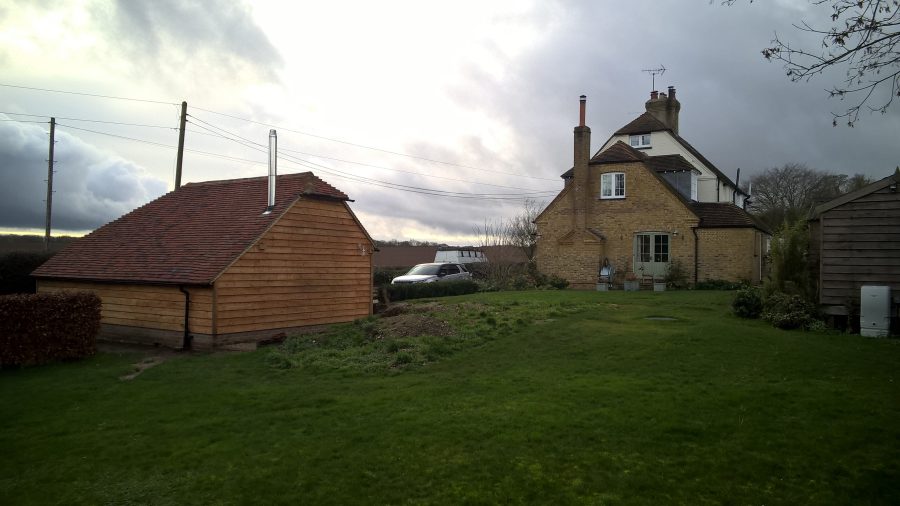Biomass

Biomass encompasses a broad spectrum ranging from a small wood stove burning logs heating a single room to a large commercial boiler burning either woodchip, logs or pellets distributing heat to multiple buildings. We design and install systems across this entire range including wood and pellet stoves, boiler stoves, wood gasification log boilers, woodchip and pellet boilers.
First and foremost biomass systems should be designed to be compatible with the lifestyle of the owner and the resources available. Using locally sourced logs requires minimal pre-processing of fuel and is the cheapest source of wood, but they need to be fed manually into the boiler or stove. Also any biomass boiler that burns logs needs to be matched to a large accumulator tank to ensure that once they have been fired-up there is sufficient heat storage and distribution capacity to prevent overboiling.
Alternatively wood pellets are a standardised source of fuel that requires the owner to spend less time managing the fuel supply to the boiler. Pellet boilers are able to modulate their output and to automatically stop feeding fuel, and consequently the accumulator tank capacity can be much smaller than for a log boiler. The fuel store can be an integral ‘day’ hopper providing a few days storage capacity, a bulk store or, as in most cases a combination of the two.
Woodchips are typically processed from locally sourced timber and require a fuel storage area and a fuel bunker alongside the boiler. The woodchips need to be moved from the fuel storage area to the fuel bunker which will usually require plant (e.g. tractor with a front loader) to be available onsite. Minimum heat storage capacity is less than for log boilers but greater than for pellet boilers.

Biomass boilers are often most appropriate for buildings with a relatively high space heating requirement which is difficult to reduce by improving insulation and air tightness. Where necessary, we can integrate a biomass boiler alongside an existing oil or gas-fired boiler, with the latter used to provide backup.
The biomass boiler can be sited adjacent to the house but are often located in a separate plant room which can be quite a distance from the main property. In such cases, the plant room is connected to the main property via a heat main which is highly insulated to reduce the heat losses.
Biomass can also work well in combination with a solar thermal collector or PV array with solar switch. During the heating season the biomass boiler supplies the space heating and the majority of the hot water load. In late spring, summer and early autumn the biomass boiler operates either less frequently or not at all as the solar thermal collector or PV takes over the supply of hot water.

With new builds the space heating requirement will be relatively low and there may be a danger of localised overheating from a wood stove. In this type of house it may be better to install a boiler stove which combines a low output to room with a larger output to boiler, where the heat from the stove can be distributed to other parts of the building via a thermal store.
In the past, the types of boiler stoves available in the UK could only be operated on vented heating systems, typically with heat from the stove thermosyphoning to a vented thermal store. The pipework connecting the stove to the thermal store needed to rise along its full length to ensure that a thermsyphon would occur once the water in the boiler gained heat. In some buildings it could be difficult to configure pipework to achieve this.
However newer types of boiler stove are now available which are designed to be used in buildings constructed to Passivhaus standards of airtightness and insulation. These operate pumped, pressurised circuits and allow greater flexibility with routing of pipework and the juxtaposition between stove and thermal storage. These stoves incorporate features such as a ducted air supply, load charging unit, thermal safety valve linked to a quench coil, low room to boiler output ratio.
